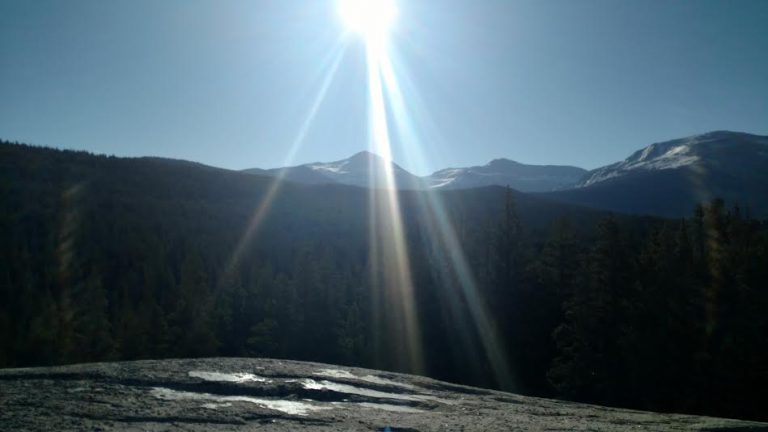Adventures in Yosemite
Posted by Travis on Aug 26th 2016

Written by Travis
Adventures in Yosemite
From June 7th to 10th of this year, I along with a college friend had the opportunity to hike a forty-ish mile stretch of the Tuolumne river, through the Grand Canyon of the Tuolumne River from White Wolf to Glen Aulin in Yosemite National Park. More than anything else, this trip was a testament to the versatility of myself, my hiking partner, and the equipment that we carried.
The hike started at White Wolf, a trailhead six miles from the wall of the canyon. At eight thousand feet most of the ground was still covered in winter snow that would often collapse under human weight if not properly tested. These conditions changed drastically at the crest of the canyon. As we descended the four thousand feet of elevation in switchbacks, snow quickly gave way to dust and dirt, dried by the suns intense rays on the granite faces. The snow had slowed our approach considerably and at mid-day when our descent began temperatures sat in the mid-nineties, so hot in fact that the glue on one of my pack zippers melted, splitting open.
Day one closed sleeping next to the Tuolumne river, its banks broken by the above average snow melt that year, turning the once calm river into a field of rapids the width of a football field. Before we had left we were warned by park officials that the trail was cut next to the river in most places, and there would be a chance that it could be slightly flooded now. This was a gross understatement.
The next morning was spent in water up to our thighs, belaying each other for safety as we hiked twenty or thirty yards at a time through the rivers outer banks, in constant prayer that the rocks beneath our feet wouldn’t shift. We emerged from the river unscathed (Save for hundreds of mosquito bites), and continued on our journey again finishing the day with a two thousand foot climb which again came late in the day seeing temperatures in the nineties. We made camp that night on the rocks above water wheel falls, where a depression at the base causes the water to spray upwards higher than the falls themselves.
Finally, the next morning after coming to the top of our final big ascent of the trip we were faced with the garbage of the overflowing river. By that I mean that the meadows surrounding the river had turned into a two-foot deep bog riddled with trees that had been dragged downstream. We attempted in vain to use the trees as bridges through the slop until falling off enough times that we resigned to simply trudging through the water until reaching its end and a few miles later the trail head.
My original intention for this trip was to test a few items sent to me by Big Agnes and Sea to Summit respectively (both companies will be reviewed at a later date), but they weren’t the gear that stood out. Really, the hardest tested pieces of gear on this trip were our footwear which were asked to keep us warm in snow, cool in dirt and dust, give us traction on slick river rocks, and dry out quickly after crossings. To this end both of our boots performed admirably, but my own seemed to edge out.
For his choice, my partner chose to carry a pair of TPS 520 GV EVO’s by Asolo, while I wore a pair of Ultra Fastpack mid II’s from The North Face. In keeping the water out his Asolo’s were vastly superior to my North Face’s. The full grain leather construction and Gore-Tex membrane kept water at bay, even when the laces were briefly submerged during crossings. In contrast, the synthetic upper and Gore-Tex membrane did little in anything to stop water from leaching into the boots even from small puddles. That said, the North Faces outperformed the Asolos considerably in drying out. Due to being a far more breathable synthetic material, the fastpacks would dry out within an hour of a crossing, giving me the confidence to wear them through the rivers.
The Asolos on the other hand retained water considerably longer, leaving my partner with wet boots and frequent sock changes until left to dry overnight. Both pairs of boots performed admirably in providing traction and keeping our feet warm in the snow, but the fastpacks won out again in comfort. At fifteen ounces, the fastpacks are some of the lightest boots on the market, and therefore make it easier to hike long distances as the weight of the Asolos (twenty -nine ounces), makes every more difficult, especially in the warmer weather, where the fastpacks mesh top allowed for better ventilation than the Asolos.
Both pairs of boots served their purposes, but the lightweight quick drying North Face Fastpacks beat out the Asolo TPS 520 GV EVO’s for this breadth of terrain and situations needing to be conquered.
